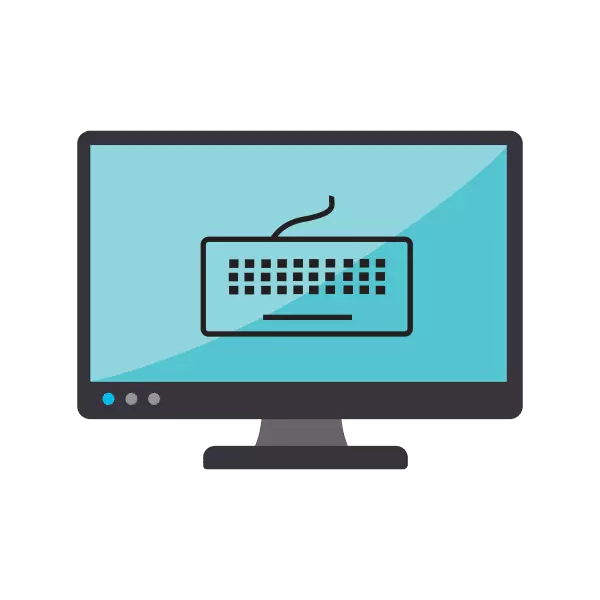
Not always at hand there is a keyboard or simply it is easy to dial text, so users are looking for alternative input options. The developers of the Windows 10 operating system added a built-in screen keyboard, which is controlled by clicking the mouse or press on the touch panel. Today we would like to talk about all available methods for calling this tool.
Call the on-screen keyboard in Windows 10
There are many options to cause the on-screen keyboard in Windows 10, each of which implies a series of actions. We decided to consider things in detail all the ways so that you could choose the most suitable and use it with further work at the computer.The easiest method is to call the on-screen keyboard by pressing the hot key. To do this, simply clamp Win + Ctrl + O.
Method 1: Search "Start"
If you go to the "Start" menu, you will see not only a list of folders, various files and directories there, there is a string for searching by finding objects, directories and programs. Today we use this feature to find the classic application "Screen Keyboard". You should only call "Start", start typing "keyboard" and launch the result found.
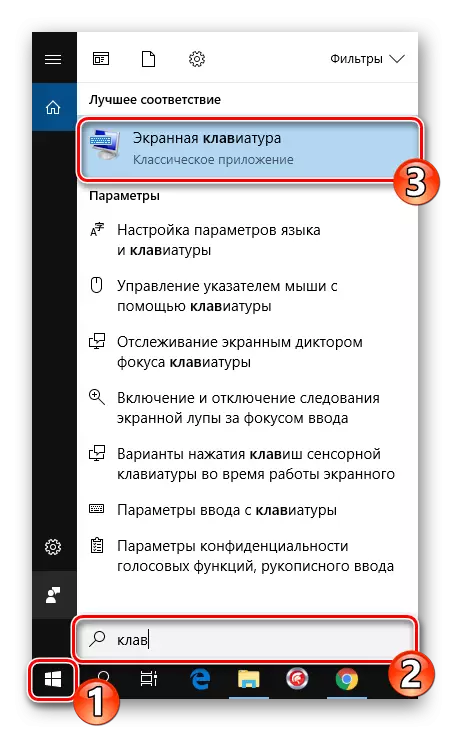
Wait a bit so that the keyboard starts and you will see its window on the monitor screen. Now you can proceed to work.
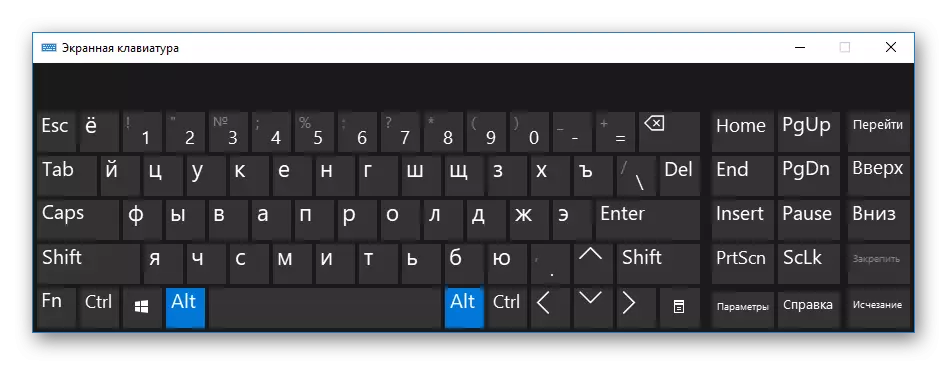
Method 2: Menu "Parameters"
Almost all operating system options can be configured through a special menu. In addition, it is activated and deactivating different components, including the Screen Keyboard applications. It is called as follows:
- Open "Start" and go to "Parameters".
- Select the category "Special Features".
- Left, find the "Keyboard" section.
- Move the "Use on-screen keyboard" slider to the "On" state.
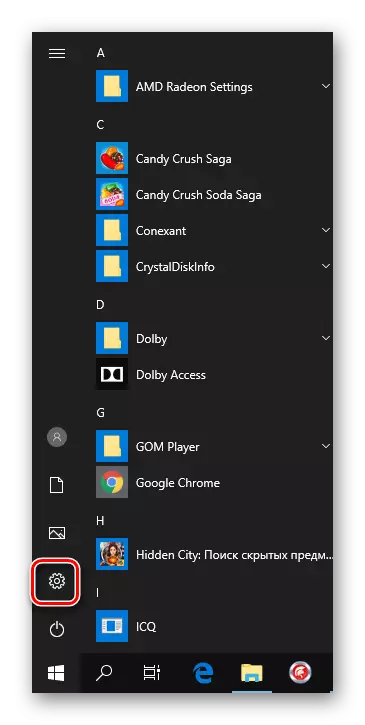
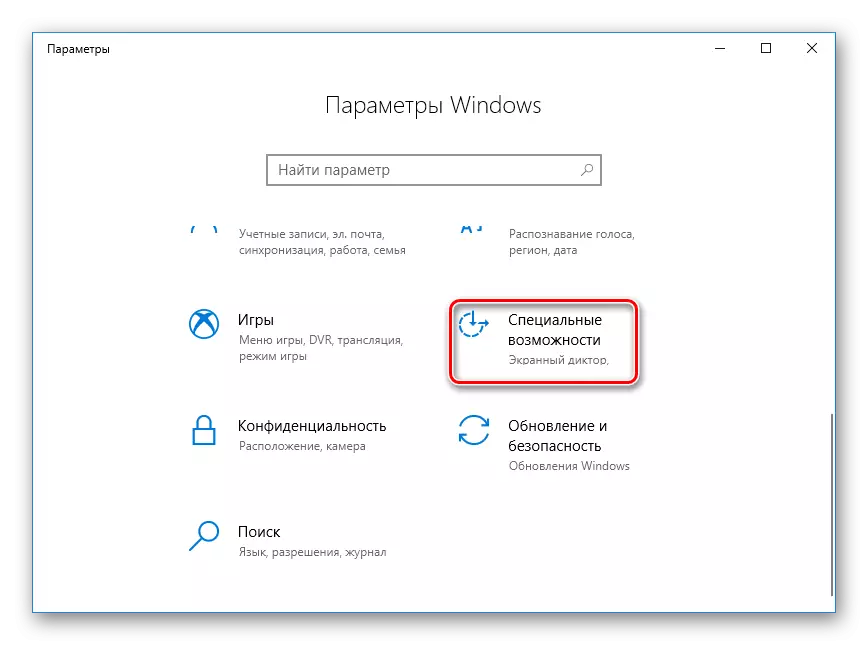
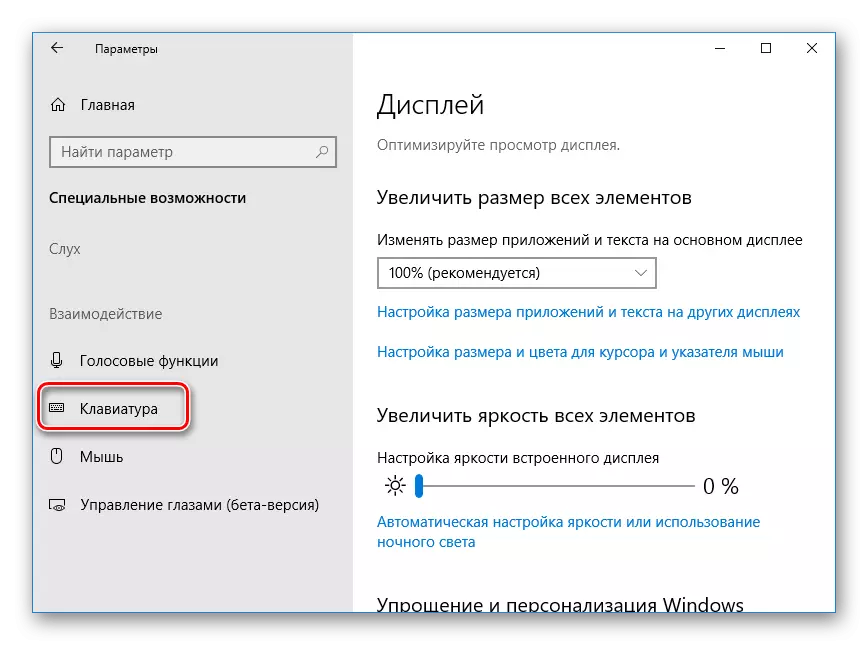
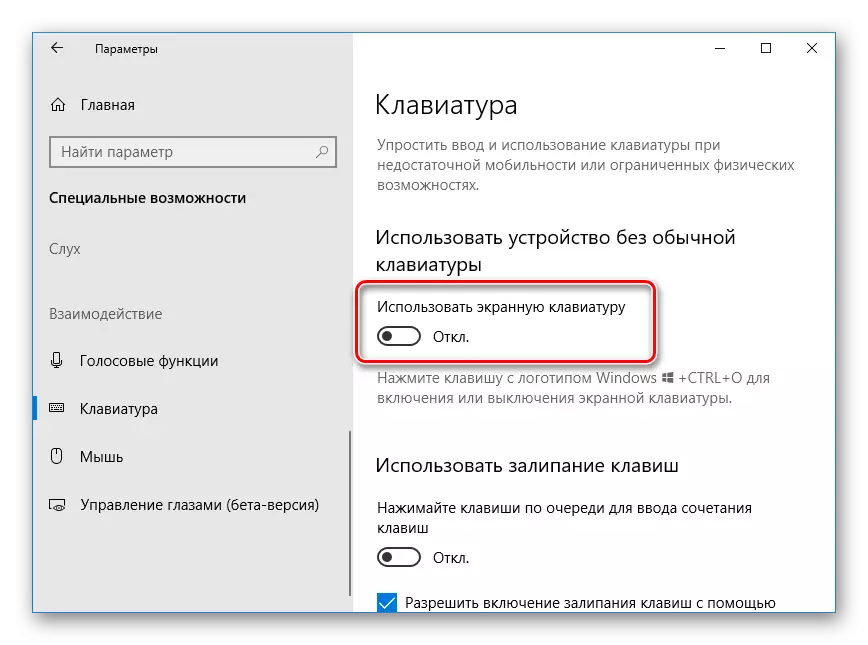
Now the application appears on the screen. It can be shutdown in the same way - by moving the slider.
Method 3: Control Panel
Gradually, the "control panel" goes to the background, since all procedures are easier to implement through "Parameters". In addition, the developers themselves pay more time to the second menu, constantly improving it. However, the virtual input device is still available for the old method, and this is done like this:
- Open the Start menu and go to the Control Panel by using the search string.
- Click LKM on the section "Center for Special Opportunities".
- Click on the "Turn on the on-screen keyboard" element, which is located in the "Simplification with Computer" block.
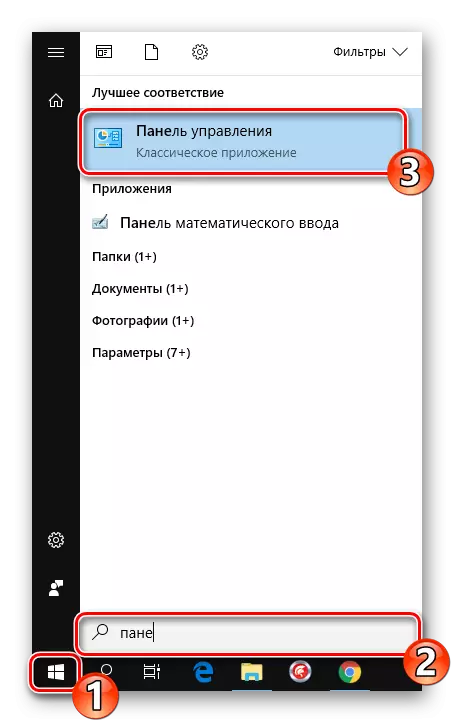
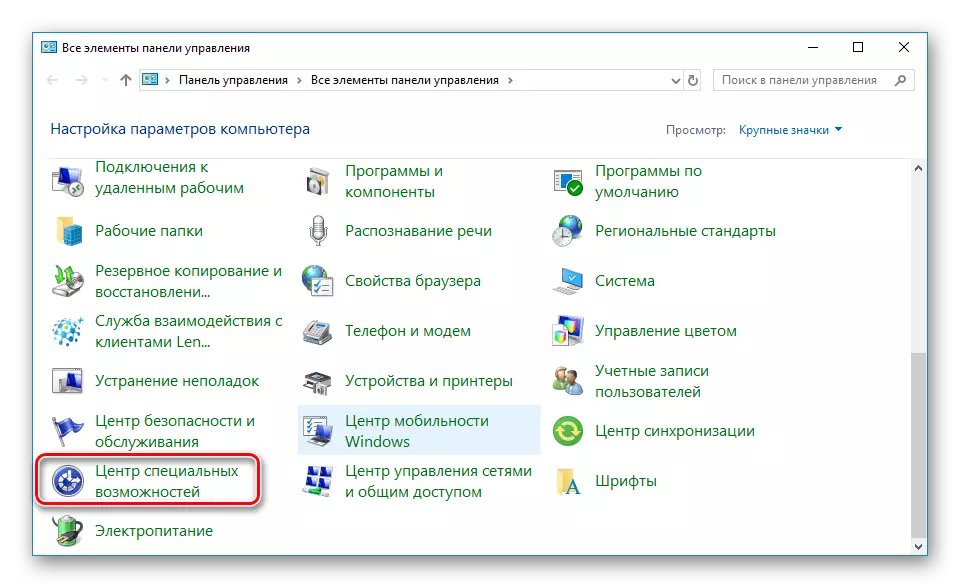
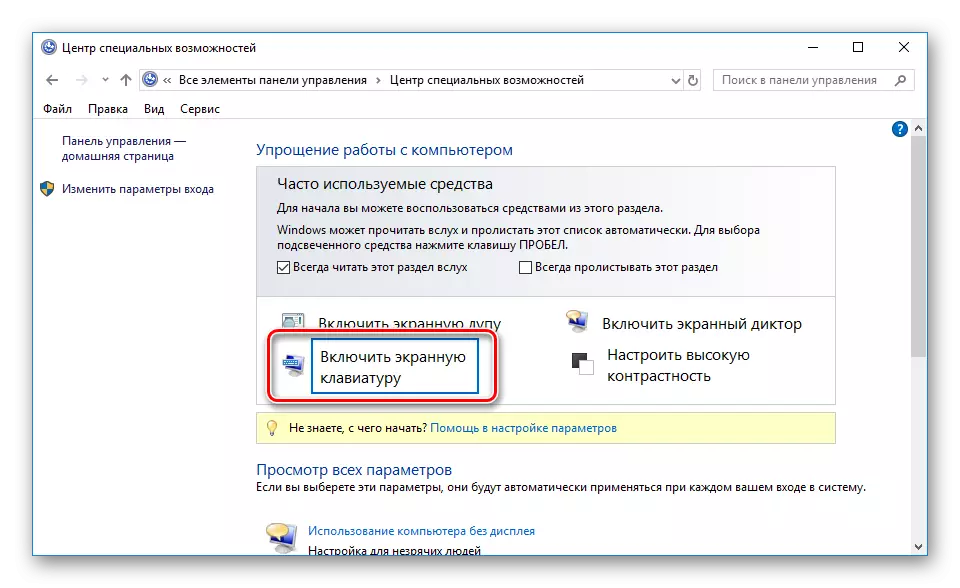
Method 4: Taskbel
On this panel there are buttons to quickly call various utilities and tools. The user can independently adjust the display of all items. It is among them and the touch keyboard button. You can activate it by clicking on the PCM on the panel and putting a tick near the string "show the touch keyboard button".
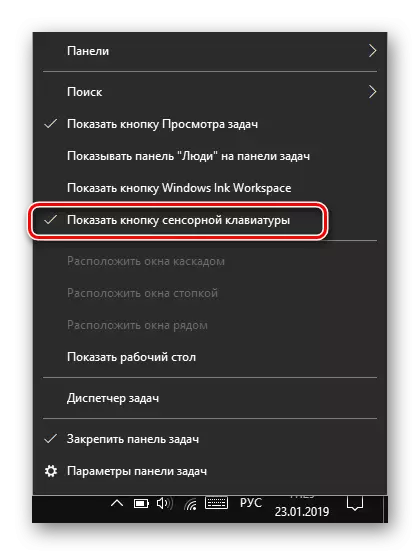
Take a look at the panel itself. Here a new icon appeared. It is worth only clicking on it to the LCM to pop up the touch keyboard window.

Method 5: Utility "Perform"
The "Run" utility is designed to quickly go to various directories and launch applications. One simple OSK command you turn on the on-screen keyboard. Run "Run" by closing Win + R and enter the word mentioned above, then click on "OK".
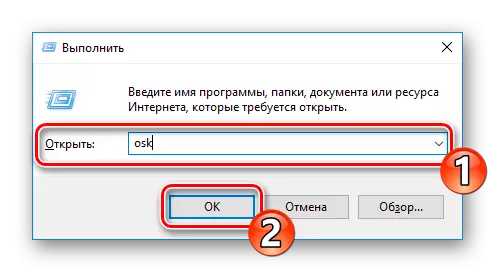
Troubleshooting on-screen keyboard
It is not always an attempt to start the on-screen keyboard runs successfully. Sometimes there is a problem when after clicking on the icon or using a hot key does not occur even anything. In this case, it is necessary to check the performance of the application service. You can do it like this:
- Open "Start" and find through the search for "Services".
- Source down the list and double click on the "Touch Keyboard and handwriting panel" row.
- Install the appropriate startup type and start the service. After the changes, do not forget to apply the settings.
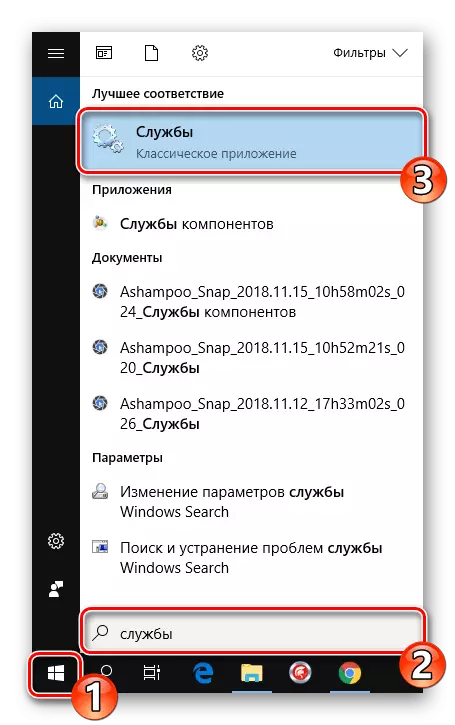
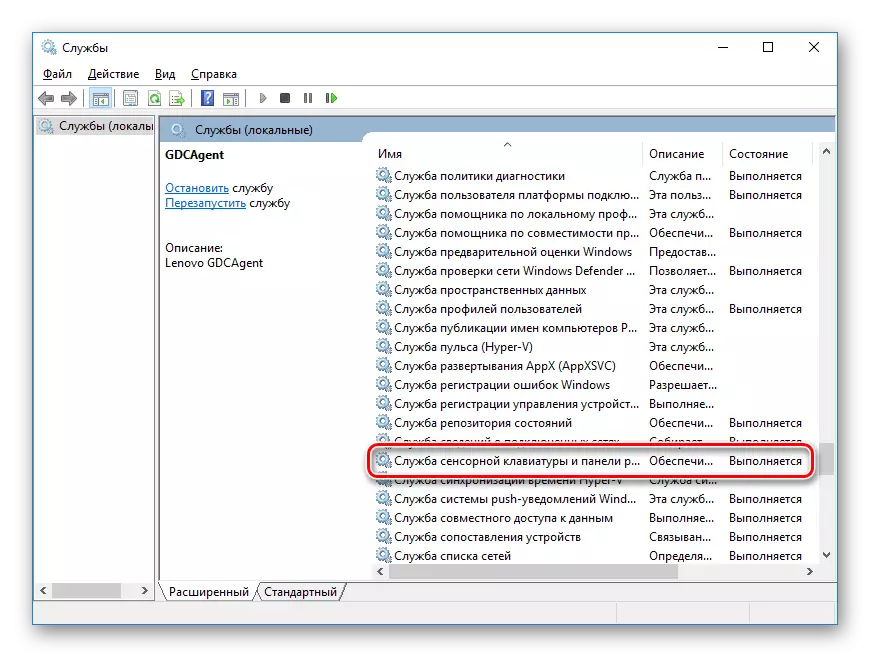
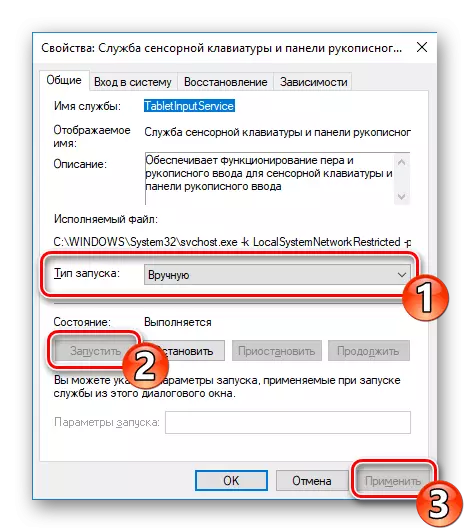
If you find that the service constantly stops and does not even help install automatic start, recommend checking the computer for viruses, clear the registry key and scan system files. All necessary articles on this topic can be found on the following links.
Read more:
Combating computer viruses
How to Clean Windows Registry from Errors
Restore system files in Windows 10
Of course, the on-screen keyboard will not be able to replace a full-fledged input device, but sometimes such an embedded tool is quite useful and easy to use.
See also:
Adding language packs in Windows 10
Solving a problem with the switching language in Windows 10
